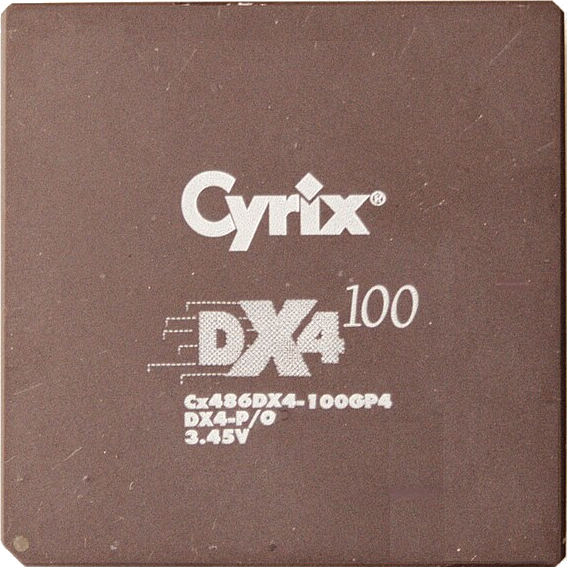I have backups on a backup hard drive and also synced to B2, but I am thinking about backing up to some format to put in the cupboard.
The issue I see is that if I don’t have a catastrophic failure and instead just accidentally delete some files one day while organising and don’t realise, at some point the oldest backup state is removed and the files are gone.
The other thing is if I get hit by a bus and no one can work out how to decrypt a backup or whatever.
So I’m thinking of a plain old unencrypted copy of photos etc that anyone could find and use. Bonus points if I can just do a new CD or whatever each year with additions.
I have about 700GB of photos and videos which is the main content I’m concerned about. Do people use DVDs for this or is there something bigger? I am adding 60GB or more each year, would be nice to do one annual addition or something like that.
Don’t use them, but these seem right for you: https://lemm.ee/post/55012343
Thanks, I missed that post! Looks like the comment section would have answered a lot of my question.
In the end I have pulled the trigger and bought an M-Disc capable burner and a stack of M-Discs, so I’m gonna give that a go and see how it works out.
Sounds good. They do make 100GB MDisc but they are a shorter life span: https://a.co/d/dTOLvW8
What makes you say they are shorter life span? The 25GB and 100GB both have the same “several hundred years” claim.
Oops, just me misreading.
Currently the only solution for a consumer are M-Disc Blue rays. They are currently the only “write once read many” media available that are preferable in these types of situations.
The media is comparable cheap - you can safe your amount of data for around 80-90USD/€ initially(or less for more but smaller discs) and then pay around 10$/€ per year for the new amount of data.
The chances that in 20 years someone is still able to read them are fairly high - there are numerous businesses that are using these disc as WORM media to backup important data on a medium that a opposing lawyer later cannot claim “was manipulated”. In 50 years it is very likely to be readable at least by professionals. The discs itself are rated for much longer storage.
If you write on them unencrypted there should be no problem of writing on them. Additionally they do not have issues with byte rot,etc.
Yeah it’s an interesting thought. They seem to come up to 100GB capacity, but the wikipedia page claims (with a [dubious] qualifier) that you need some sort of special higher power burning device to write to M-Disc.
I don’t have an optical drive at the moment. Would I just pick any rated for BDXL?
You need a designated M Disc capable burner,yes. (Not generic BDXL,there are slight differences) There are a few on the market though - they cost around 100-150 bucks usually.(In theory you can use a regular writer sometimes - I know people who do that,but why risk that?) I usually recommend the verbatim to my clients,they are dirt cheap and work flawlessly so far.
For reading the discs any regular data-capabale blue ray disk drive will do.
I decided instead to use ZFS. Better protection than just letting something sit there. Your backups are only as good as your restores. So, if you are not testing your restores, those backups may be useless anyway.
ZFS with snapshots, replicated to another ZFS box. The replicated data also stores the snapshots and they are read-only. I have snapshots running every hour.
I have full confidence that my data is safe and recoverable.
With that said, you could always use M-disk.
ZFS even if only one server is much better than most people have. If your ZFS replication is to a different building you have done pretty good. However as others have pointed out there are limits. Those servers costs you a couple bucks/month in electric (where I live my electric is 100% wind, but most of you should read CO2). You have to buy both servers, and hard drives will crash regularly.
There are a lot of trade offs, but cold storage backups are often much cheaper in the long run than the backup zfs server. And those cold backups are a lot easier to put into multiple different locations.
I have automated backups including to cloud, but I want a separated manual system that cannot get erased if I mess something up (accidentally sync a delete, lose encryption key, forget to pay cloud bill). I have 3 2 1 but it’s all automated and backups are eventually replaced, if it’s not a critical failure I won’t necessarily know I’ve lost something.
Basically, I specifically want cold storage, and not cloud. I will only add, not delete from it. And I don’t want it encrypted.
Based on other conversations I’m planning on using duel disks mirrored, zfs, annual updates and disk checks with disks rotated out every 5 years (unless failing/failed). Handling the need for layman retrival of data by including instructions with the hard drives.
Basically, I specifically want cold storage, and not cloud. I will only add, not delete from it. And I don’t want it encrypted.
I have a client with a photographic studio. To give you an estimate, his data is around 14TB of mostly camera pictures with approximately 20 years or history and the owner believe it or not, relies on multiple external hard drives for cold storage, he has a 2TB Seagate thats like 2011-2012 old which still works.
To put in a cupboard tho, M disc is your best bet.
That sounds like a really good idea. You basically get the best of everything.
The cool thing about ZFS is the pool information is stored on the disks themselves. You can just plug them in and import the pools.
For local backups it depends on what you want to have:
- The cheapest option is a usb or thumb drive. But you have to regularly plug it in and copy your backup on it.
- The lazy option is to buy a NAS and configure a backup job that regularly creates a backup. Versioned, incremental, differentials and full backups are possible as is WORM to add a bit of extra security. You can configure a NAS to only turn on specified times, do a backup and then turn off again. This will increase protection against encrypting malware. WORM also helps in this case.
Or just let it run 24/7, create backups every hour and install extra services on it like AI powered image analysis to identify people and objects and let it automatically tag your photos. Cool stuff! Check out QNAP and Synology or build a NAS yourself.
A NAS can also be configured to present its content in a LAN by itself. Any computer will automatically connect to it if the access isn’t secured by user/password or certificate.
I recommend buying a NAS.
So, I have a server that has a backup drive, automated backups, and replication to laptops as well as cloud storage in Backblaze B2. What I’m looking for is something completely separated from the automation that is a backup for if I screw up the automation, as well as a backup that a layman can access (i.e. no encryption, media that is usable by anyone). I have had some very bad experiences with flash drives but I am thinking a HDD with SATA->USB cable attached (I already have the cable).
From the other conversations in this thread mentioning many options, the hard drive option seems the best for my use case, but I’ve also been convinced of the benefit of printing out some physical photos as well, so my current plan is to get a big container, put a couple of mirrored hard drives in there (to validate against each other as protection against bit-rot), and print 100 photos each year to add to the container to have an extra layer of redundancy.
Printing the photos won’t help much. After 20 or so years they are all discolored. You can’t prevent that.
I think SSDs might be the best storage medium for you. Consumer-grade ssds have a 1 year data retention when powered off. That means at least once per year you have to turn it on and copy the data around one time to refresh the cells. This way it’ll probably last several 100 years.
You can’t exactly make it fool-proof. Outside people will never know what you did to create your backup and what to do to access it. Who knows if the drives file system or file types are still readable after 20 years? Who knows if SATA and USB connectors are still around after that time?
For example it is very likely that SATA will disappear within the next 10-15 years as hdds are becoming more and more an enterprise thing and consumers are switching to M.2 ssds.The printed photos are only there as an extra layer of redundancy in case everything else fails. It’s ok if they get discoloured a bit, it never put me off going through my grandparents’ suitcases of photos. Ideally the digital files survive, if not then at least there is something rather than nothing.
Is SSD really necessary? Everything I search up says SSDs have worse retention than HDD in cold storage. A couple TB of HDD is pretty cheap these days, and seems like a better cold storage option.
You can’t exactly make it fool-proof. Outside people will never know what you did to create your backup and what to do to access it. Who knows if the drives file system or file types are still readable after 20 years? Who knows if SATA and USB connectors are still around after that time?
Yes, so now I’m thinking a rotation cycle. About every 5 years replace the drives with new ones, copy over all data. If newer technology exists then I can move to that newer technology. This way I’m keeping it up to date as long as I can.
For example it is very likely that SATA will disappear within the next 10-15 years as hdds are becoming more and more an enterprise thing and consumers are switching to M.2 ssds.
Does this matter if I have a SATA->USB cable stored with it? Other than if USB A standards change or get abandoned for USB C, but that should be covered by the review every 5 years.
Is SSD really necessary? Everything I search up says SSDs have worse retention than HDD in cold storage. A couple TB of HDD is pretty cheap these days, and seems like a better cold storage option.
SSDs are by design less susceptible and more robust. No moving parts and able to work in much harsher conditions than hdds will ever be able to. The standard set by JEDEC requires every consumer ssd to have a 1 year data retention while powered off at 30 °C (I think). That’s the minimum it has to archieve but usually they are better than that. Do not buy the cheapest thumb drives because they contain the all the crap that wasn’t good enough to make ssds from it.
Btw you need to fire hdds up regularly too or the motor gets stuck. I think every 3-6 months was the recommendation.Yes, so now I’m thinking a rotation cycle. About every 5 years replace the drives with new ones, copy over all data.
Don’t make it flat every 5 years. Let a software monitor the SMART values of the drives and send notifications if the values indicate an increased change of a dying disc/ssd.
Does this matter if I have a SATA->USB cable stored with it?
Those are the first that fail, followed by the usb controller chip in the tray. Keep it as simple as possible. Removable trays are probably the best way but I’m not sure how much wear they can take.
Do not buy 2.5" drives. This class will die out soon™. There were no new hdds introduced in years and ssds are often replaced by M.2 ones because of the faster connection.
You are the first person who has recommended SSD for cold storage. Everyone else (including what I’ve googled) says HDD for cold storage, just spin up every year or two and they will be fine. Can you point me at further reading?
Don’t worry, I’ll SMART check the drives each year as I update as required.
As for types of drives dying out soon, I can reassess the situation every 5 years when I do drive replacement. I would be confident 2.5" drives will still be readable in 5 years.
Do not use an SSD for cold storage - it will fail. SSDs need to be plugged in every once to refresh the charge in their NAND, otherwise they’ll lose the data.
This is not a theoretical thing - I’ve had a good Samsung 850 Pro drive fail while being off for 2 years.
Just a hdd in usb caddy? IMHO good enough for 4 tier backup.
Yes this seems to be the general theme. Main issue is sorting out a file system. I can use a self-repairing one, to recover from long term storage issues, but then it likely won’t work in Windows which it may need to if I want a layman to be able to access it. So still some refinement of the plan but it’s coming together.
I’ve also decided to print some physical photos, aiming for 100 per year, and will put everything in a container together. The physical photos are for in case the container is lost for decades and the drives die, then there will at least be something.
If you need something which can withstand some bitrot on single drive, just use par2. As long is filesystem is readable, you can recover files even if bit of data get corrupted
Thinking about this, the only ancient information we are still able to access is painted or edged on stone or clay. How about some sort huge wall with thousands of QRcode like engravings?
Reminds me of project Silica. Media historically was more durable (stone/ ink and cloth paper, etc) but had a low data density. As density increased, so did fragility
I’m using blu-ray disks for the 3rd copy, but I’m not backing up nearly as much data as you are.
The only problem with optical media is that you should only expect it to be readable for a couple of years, best case, at this point and probably not even that as the tier 1 guys all stop making it and you’re left with the dregs.
You almost certainly want some sort of tape option, assuming you want long retention periods and are only likely to add incremental changes to a large dataset.
Edit: I know there’s longer-life archival optical media, but for what that costs, uh, you want tape if at all possible.
Hmm I am keen for something that could be left in the cupboard for 50 years and still works when brought out.
What does it take me to do home tape storage? Do the tapes needs to be stored with climate control or are they pretty stable? Is it feasible for the average person to load the contents?
I’m thinking of pulling a suitcase out of the cupboard of all the baby photos, but digital files or photo and video.
Tape isn’t readable by normal people even if they found it tomorrow with a drive already configured to be used.
In 50 years good luck finding a working drive compatible with LTO4 when LTO32 is out (it’s backwards compatible only with previous gen).
Unless you write on the box “here there are the keys for 100k bitcoins” they’ll just trash the tape
Yeah from some other comments I think my initial plan (that I’ll research some more) will be:
- buy a new HDD, format with ZFS or btrfs for error correction
- copy data onto drive
- store in cupboard with sata-> USB cable and instructions about what it is, how to access .
- every year, load the previous year’s data onto the drive
- about every 5 years, replace the drive by copying onto a brand new one (timeframe will likely depend on when my other HDD drives die)
This way I should get a chance to update storage medium as technology changes as well.
That is not gonna work - read up on byte rot.
Yeah since then I’ve been convinced I need two drives mirrored under zfs, which should handle that scenario.
Hard drives loose their data fast if not powered (within a few years),so do SSD based media. Furthermore the former are very suspectable to mechanical destruction, electromagnetic interference,etc. And even if for some reason your drives last that long there will be nothing to connect them to - you know how we connected hard drives 25 years ago? Via SCSI/IDE. Good luck finding a converter to these now. If you go back further you need ISA controllers for the drives.
This is a really bad idea. Really really bad, especially with the goal you want to achieve. Your data will be gone within 5 to 10 years.
The idea is that I’d swap out drives every 5 years or so. If USB A is no longer in use I’d swap out at that point for something newer. Plus the drives would be powered on every year for the update, it’s just the point that I stop doing it (too old/hit by bus/etc) that the clock would start ticking.
I do like the M-Disc idea though. Probably a similar price, and more in line with the shelf-stable solution I was looking for.
So, 50 years isn’t a reasonable goal unless you have a pretty big budget for this. Essentially no media is likely to survive that long and be readable unless they’re stored in a vault, under perfect climate controlled conditions. And even if the media is fine, finding an ancient drive to read a format that no longer exists is not a guaranteed proposition.
You frankly should be expecting to have to replace everything every couple of years, and maybe more often if your routine tests of the media show it’s started rotting.
Long term archival storage really isn’t just a dump it to some media and lock it up and never look at ever again.
Alternately, you could just make someone else pay for all of this, and shove all of this to something like Glacier and make the media Amazon’s problem. (Assuming Amazon is around that long and that nothing catches fire.)
Hmm damn. I don’t really think cloud is the right answer for what I’m trying to do.
I disagree that formats like JPEG won’t be readable in 50 years. I feel like there would be big demand for being able to read the format even if it’s been superceded, on account of all the JPEGs that still living people have.
Maybe I get a big drive. Each year I copy over files from the last year. Every X years I swap the hard drive for a new one, copy all data.
How can I tell if individual files get corrupted? Like the hard drive failed in that section, then I copy the corrupted file to the new drive, and I’d never know. Can I test in bulk? 50k+ photos and videos so far.
How can I tell if individual files get corrupted?
Checksums. A good filesystem will do this for you, but you can do it yourself if you want.
If you sync a drive with rsync or something periodically, it’ll replace files with different checksums, fixing any corruption as you go. Then smart tests should tell you if there’s any corruption the drive is aware of. I’m sure automated backup tools have options for this.
I specifically don’t want to be touching previous files on the drive, it should be addition only. So I may need to write a script to do the checks, or compare against a mirror drive. I can do this with the right filesystem, but I’m worried that if I use a filesystem not readable by Windows then it may not be layman-proof enough.
Then I’d go with FAT on a USB, which should be plenty portable into the future. You’ll want to replace it every 5-10 years, and check on it every other year or so.
That’s about as easy to use as I can think of. Decades down the road, physical media like DVDs and tapes may be difficult to find readers for, but USB is versatile enough that someone is bound to have access. Micro SD cards may also be a good option, as long as you keep a couple USB readers around.
I have a terrible track record with USB sticks, including completely losing a stack of photos because of a USB stick.
I’m now thinking the benefits of a nice error-correcting file system probably outweigh the benefits of using a widely supported one. So I might use a pair of mirrored hard drives with SATA->USB cable, then include instructions along the lines of “plug into my linux laptop to access, or take to a computer repair show if you can’t work it out”.
This was a recent point of discussion on the 2.5 Admins podcast (https://2.5admins.com/2-5-admins-228/). Some good discussion on there.
My own thought is the best way to handle your family-member-finding-your-old-photos problem is the analog way: make some prints. It’s absolutely idiot proof, the methodology of keeping paper goods is well understood, and the technology is platform independent.
Yeah I really want a digital copy, but for redundancy physical photos sounds like a good idea. Maybe I should do the hard drive rotation thing mentioned in other comments, but each year when I’m updating I could print 100 photos as well. Have a suitcase or container where I keep the hard drives and the physical photos. Then I’d have a decent chance of all photos making it in digital form, plus a bunch of photos just in case the hard drives fail. The hardest part will be going back through the previous years finding an printing 100 photos from each year, but after that I don’t have to get through too many each year.
A hybrid is probably a good way forward. I had a career as a photographer for a while and I learned from that: going through 1000 photos takes very little time, but going through 10,000 takes an eternity. If you can star or mark your obviously important photos as you go along, it’ll take very little to print them at the end of the year.
Just buy a spinning drive and call it a day. Follow 3-2-1 protocol and you’ll never lose anything . Check your longterm “cold storage” HDD’s 1-2 times a year. They should last 5-10 with little fuss. Some will go longer with no issues.
If you follow 3-2-1 you’ll never lose anything and you only have to spend a few hours a year thinking about backups.
This is actually terrible advice. WORM media exists for a reason and telling someone with a mere 3-2-1 he will never loose data is absolutely irresponsible.
Neither is it a good idea to use regular hard-disk for offsite-cold storage. A really really bad idea.
If you follow proper 3-2-1 you are living the four nine’s dude. A “regular” spinning HDD can last a decade or more without fuss (define “regular” please…?)
You will not lose all 3 backups at once. When one goes down, you replace it. There’s a reason this is industry standard for media production and beyond. “Irresponsible”? Please.
3-2-1 is the minimal consensus and not recommended anymore for everything you need to reliably have access to after a long time - the fact that some ransomware viruses intentionally have a very time they are laying low to decrypt old and rarely used files is one of the main reasons. Healthcare, finance, taxation, accounting, etc. are all sectors that heavily rely on WORM media and long term tape storage.
You are right that a spinning disk often can work for 10 years - but there is a reason they are exchange earlier in a professional setting. Not all of them will. And you were talking about cold storage disks. This is something even the manufacturers do not recommend - for a reason.
Dude this isn’t healthcare this is a person’s home backups. Are you kidding me?
And yes you swap them earlier, I am just saying what is possible. Not that you should buy 1 drive, sit around 10 years, and expect everything to be fine.
You’re being very antagonistic here as well. I’m not sure what all the hostility is about. Either way I bet you if you follow 321 for your home backups you’ll never lose a single thing. Idk what you do at home and what you’re storing but for the vast majority of people that is more than enough.
I have not used them myself, but M-DISC sounds like what you’re looking for. There are a few other alternatives listed on that Wikipedia article, too.
Thanks, I think the risk here is that there may not be hardware to read it.
From the suggestions here I’m thinking a hard drive with USB connection would be best. It won’t last 50 years but instead I’d replace it every 5 years or so. I’d use an error resistant file system and plug it in each year to add the new files.
This way I also get the chance to move it to newer technology in future instead of a new hard drive. It would then only need to survive for some period of time after I last replaced it, so there’s a good chance of it remaining readable for most of my life.
Thanks, I think the risk here is that there may not be hardware to read it.
M-Disc DVDs are readable by ordinary DVD drives. So you could simply put a USB DVD drive alongside those backup M-Discs on the shelf.
Yeah that’s an idea. It does seem like I’d need a lot of disks though. And I don’t actually have a disk reader or writer at all at the moment.
Wrong post, ignore this.
Like this? https://www.pbtech.co.nz/product/DVWVER4618789/Verbatim-43888-External-Slim-Bluray-Writer-Ultra-H
That’s NZD by the way, conversion rates are terrible at the moment so about halve it for USD, seems in the price range you said.
Ah, a Kiwi. Say hello to your sheep’s from me. (Sorry,former WA resident here, couldn’t resist)
But yeah, we are using exactly that model - and it’s currently only 20 NZD less from what I pay wholesale in Europe for it. So it seems like a pretty decent price.
The drive itself is solid. We currently have around 10, maybe 15, at our clients and it works without any hassle.
I personally recommend to store the disk’s offsite(I store them in a locked box in a bank vault) and some of my clients choose to store another drive there to be extra safe,but I personally don’t see the point.
🐑
Sweet, thanks, I think that’s a good plan. I am thinking duplicate disks, one on site one off site. I do have a cloud backup, but if I die in a house fire then having the offsite disks is a much better solution than the random B2 bucket.
Thanks for the help 🙂
The other thing is if I get hit by a bus and no one can work out how to decrypt a backup or whatever.
Documentation, documentation, documentation. No matter what system you have, make sure your loved ones have a detailed, image-heavy, easy to follow guide on how restorations work - at the file level, at the VM level, at whatever level you are using.
That being said, DVDs actually have quite a short shelf life, all things considered. I’d be more inclined to use a pair of archival strength USB NVME drive, updated and tested routinely(quarterly, yearly, whatever makes sense). Or even an LTO tape, if you want to purchase the drive and some tapes.
You can put your backups in something like VeraCrypt. Set an insanely long password, encoded in a QR code, printed on paper. Store it in the same secured location you store your USB drives (or elsewhere, if you have a security posture).
You may also consider, if money is not a concern, a cloud VPS or other online file storage, similarly encrypted. This can provide an easy URL to access for the less tech-savvy, along with secured credentials for recovery efforts. Depending on what your successors might need to access, this could be a very straightforward way to log into a website and download what they need in an emergency.
archival strength USB NVME drive,
Does such a thing exist? Ordinary flash storage is pretty bad at keeping its content when powered off for a long time, due to how flash memory works. I’d be curious about such drives.
No, they don’t, I pulled it out of my butt. I rewrote my original draft and that slipped in. NVME wouldn’t make sense unless you were powering them up every few months for updates.
As much as I’m worried about family not being able to do it, I’m just as worried that I will do something dumb and lose the encryption key, losing everything. I am keen on the digital equivalent of a suitcase full of photos that could be stumbled upon.
I also already have borg backup set up to a backup drive and synced to the cloud (Backblaze B2).
For tape drives, is many thousands of dollars a normal price? Not sure I’m that keen.








